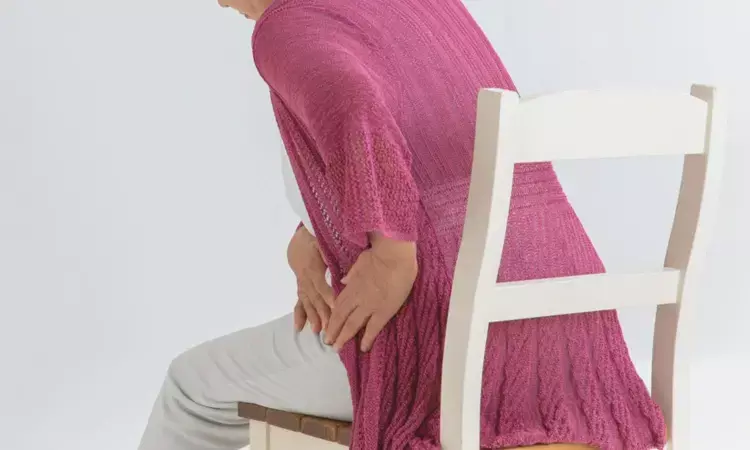- Home
- Medical news & Guidelines
- Anesthesiology
- Cardiology and CTVS
- Critical Care
- Dentistry
- Dermatology
- Diabetes and Endocrinology
- ENT
- Gastroenterology
- Medicine
- Nephrology
- Neurology
- Obstretics-Gynaecology
- Oncology
- Ophthalmology
- Orthopaedics
- Pediatrics-Neonatology
- Psychiatry
- Pulmonology
- Radiology
- Surgery
- Urology
- Laboratory Medicine
- Diet
- Nursing
- Paramedical
- Physiotherapy
- Health news
- Fact Check
- Bone Health Fact Check
- Brain Health Fact Check
- Cancer Related Fact Check
- Child Care Fact Check
- Dental and oral health fact check
- Diabetes and metabolic health fact check
- Diet and Nutrition Fact Check
- Eye and ENT Care Fact Check
- Fitness fact check
- Gut health fact check
- Heart health fact check
- Kidney health fact check
- Medical education fact check
- Men's health fact check
- Respiratory fact check
- Skin and hair care fact check
- Vaccine and Immunization fact check
- Women's health fact check
- AYUSH
- State News
- Andaman and Nicobar Islands
- Andhra Pradesh
- Arunachal Pradesh
- Assam
- Bihar
- Chandigarh
- Chattisgarh
- Dadra and Nagar Haveli
- Daman and Diu
- Delhi
- Goa
- Gujarat
- Haryana
- Himachal Pradesh
- Jammu & Kashmir
- Jharkhand
- Karnataka
- Kerala
- Ladakh
- Lakshadweep
- Madhya Pradesh
- Maharashtra
- Manipur
- Meghalaya
- Mizoram
- Nagaland
- Odisha
- Puducherry
- Punjab
- Rajasthan
- Sikkim
- Tamil Nadu
- Telangana
- Tripura
- Uttar Pradesh
- Uttrakhand
- West Bengal
- Medical Education
- Industry
Zoledronic acid improves outcomes for osteoporotic hip fractures, finds Study

A new study published in the Journal of Bone and Mineral Research found that when older patients with osteoporotic hip fractures are given zoledronic acid during their initial hospital stay, it greatly lowers their all-cause mortality and future vertebral fractures.
High 1-year death rates are linked to osteoporotic hip fractures, around 20% to 25% in women and 33% to 35% in men. Only 8% to 10% of patients receive zoledronic acid within a year following a fracture, despite the proven ability of this medication to lower fracture and death risks. This study evaluated the impact of zoledronic acid inpatient therapy on death rates and the risk of recurrent fractures in patients who were admitted for a first hip fracture.
Between January 1, 2016 and March 15, 2023 individuals with acute fragility hip fractures admitted to Massachusetts General Brigham facilities were identified. At the time of the fracture, the patients included had normal calcium levels, no postoperative renal damage, and were not actively using antiosteoporosis medicine. Propensity score matching was performed in a 1:1:3 ratio between patients who got zoledronic acid and the patients who did not get antiosteoporosis medication within the first year following their initial fracture. All-cause mortality and recurrent vertebral, nonvertebral, or contralateral hip fractures for a maximum of 24 months after the index fracture were the main research outcomes.
- A total of 652 patients were given zoledronic acid and matched with 1926 people who got no antiosteoporosis medication. The patients who received zoledronic acid had a considerably reduced all-cause death rate than the ones who received no treatment.
- Subgroup analysis revealed that women in the zoledronic acid group had much lower mortality than males in the untreated group, despite the difference between the two groups being not significant.
- Furthermore, patients under the age of 90 who got zoledronic acid had considerably decreased mortality, regardless of the differences between groups above the age of 90 being not significant.
- The rates of future spinal compression fractures were reduced in the zoledronic acid group. There were no significant differences between groups in the incidence of new contralateral hip fractures or nonvertebral fractures.
- When it came to unfavorable outcomes, the rates of nonunion were comparable in the treated and untreated groups, and the zoledronic acid group did not see any incidences of atypical femoral fractures or osteonecrosis of the jaw.
Overall, the outcomes of this study support that zoledronic acid given inpatient is advantageous for osteoporotic hip fractures.
Reference:
Fan, W., Sun, X., Leder, B. Z., Lee, H., Ly, T. V., Pu, C. T., Franco-Garcia, E., & Bolster, M. B. (2024). Zoledronic acid for hip fracture during initial hospitalization. In Journal of Bone and Mineral Research. Oxford University Press (OUP). https://doi.org/10.1093/jbmr/zjae101
Neuroscience Masters graduate
Jacinthlyn Sylvia, a Neuroscience Master's graduate from Chennai has worked extensively in deciphering the neurobiology of cognition and motor control in aging. She also has spread-out exposure to Neurosurgery from her Bachelor’s. She is currently involved in active Neuro-Oncology research. She is an upcoming neuroscientist with a fiery passion for writing. Her news cover at Medical Dialogues feature recent discoveries and updates from the healthcare and biomedical research fields. She can be reached at editorial@medicaldialogues.in
Dr Kamal Kant Kohli-MBBS, DTCD- a chest specialist with more than 30 years of practice and a flair for writing clinical articles, Dr Kamal Kant Kohli joined Medical Dialogues as a Chief Editor of Medical News. Besides writing articles, as an editor, he proofreads and verifies all the medical content published on Medical Dialogues including those coming from journals, studies,medical conferences,guidelines etc. Email: drkohli@medicaldialogues.in. Contact no. 011-43720751


